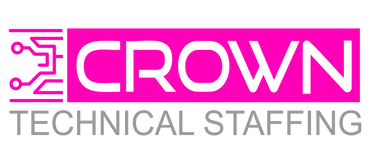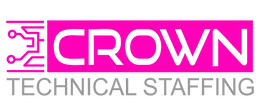Today’s labor market is tight, fast-moving, and ever-changing.
We’re all challenged to hire the best talent that we can. In a competitive market where candidates expect decisions faster, we know many companies are balancing a number of priorities. For example, talent quality, aggressive hiring goals, and staffing needs can all be at odds with one another. This makes the candidate experience that much more important.
The candidate experience encompasses all interactions a candidate has with an employer, from the initial application to the final offer. Investing in this experience is a strategic move that directly impacts talent acquisition, employer branding, and overall business growth.
Within this article let’s explore what the ideal candidate experience should look and feel like.
Setting the right strategy:
Very few organizations take a holistic approach to talent acquisition and the impact it has on the candidate experience. Most consider each step of the process (branding, sourcing, interviewing, hiring, onboarding) separately and craft clumsy solutions. According to a study by Aberdeen Group, only 36% of companies have invested in a fully integrated talent acquisition strategy. Getting integrated is the critical step to improving the candidate experience.
Also important is aligning the candidate’s experience and branding strategy to the business strategy, which allows for a focused approach instead of an overwhelmed or reactive series of actions. The strategy should also be complementary to the overall corporate brand. Using marketing and communications resources that the company already owns, such as a website platform, in-house creative resources, email marketing tools, and social channels, saves the Talent Acquisition function time and resources with the added benefit of staying true to the overarching corporate brand.
Technology Stack
According to new research by advisory company CEB, 70% of HR Professionals thought that a positive candidate experience was important, but only 40% actually monitored it in some fashion. How do Talent Acquisition Teams (TA Teams) go about measuring success? Tracking application completion rates, career drop-off rates, and declined offers are all important data points for measuring the effectiveness of the candidate experience you create. Surveys are also a great way to measure various aspects of candidate experience. Sixty percent of job seekers quit a job application in the middle due to its length or complexity. If your application or interview process is cumbersome, you need to know so you can correct it. Surveying your candidates is also a great way to communicate that you value their feedback and recommendations on how you can improve in the future.
Feedback/Communication Tools:
- SurveyMonkey: Post-interview surveys can be sent to candidates to gather feedback on the recruiter’s communication skills, helping identify areas of improvement.
- Typeform: An interactive tool to create engaging feedback forms, ensuring higher response rates from candidates.
- Chatbots or text messaging software: There are more ways to reach candidates than just a phone call these days. Chatbots and text messaging software are innovative ways to communicate with candidates. These are tools that can help ensure your talent acquisition teams are staying in touch with the best candidate.
Foundational to the entire candidate experience is one key factor: belonging. Bring inclusivity into the hiring process. But what does that actually mean? How has your organization approached its diversity hiring strategy? Well, for a positive candidate experience, it starts with intention and awareness.
Take a hard look at your talent pipeline and examine talent sources and talent pools. Where can you meaningfully diversify how you’re sourcing candidates? Are you intentional about bringing diverse candidates into the talent pipeline?
9 ways to improve the candidate experience
- Make it easy for candidates to apply for jobs
- Make sure your careers page is up-to-date
- Train your recruiting team on best practices for effective communication
- Be transparent about all stages of the hiring process from the start
- Create guidelines to help improve turnaround time during the interview process
- Create thorough, standardized email templates for rejections
- Create opportunities for the candidate to experience the company culture
- Offer the opportunity for feedback
- Above all, respect your candidates’ time
In the intricate dance of talent acquisition, the candidate experience stands as the pivotal first step, setting the rhythm for all that follows. In a world where the labor market is in constant flux, the importance of curating a positive and inclusive candidate journey cannot be overstated. As we explored the many facets of this experience, from the foundational strategies to the nuances of technology and feedback, one truth emerges: the future of hiring is rooted in intention, inclusivity, and innovation. Companies that prioritize and invest in these aspects not only stand out in today’s competitive landscape but also pave the way for a more diverse, engaged, and dynamic workforce.
So How Can We Help You…
When you’re ready to grow and expand your Engineering and Manufacturing Leadership Teams, here are 3 ways that we can help:
1. We partner with your existing talent acquisition teams to help attract and retain Engineers and the frontline leaders that drive productivity.
2. Reduce the cost of acquiring and training new hires by supporting and enhancing the efforts of your onboarding team for the first 90 days.
3. Provide a no-cost assessment of your hiring strategies with a 15-minute consultation.


